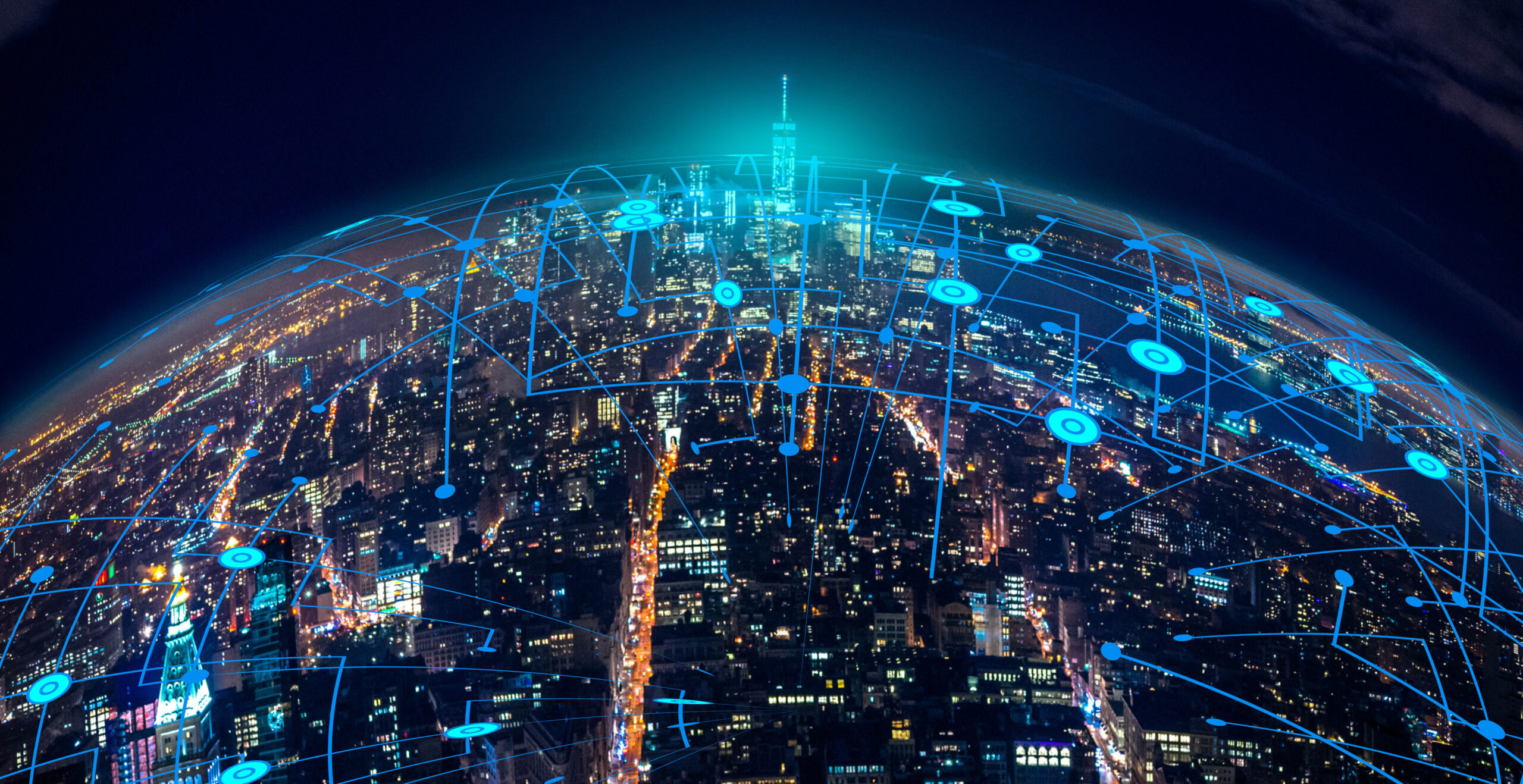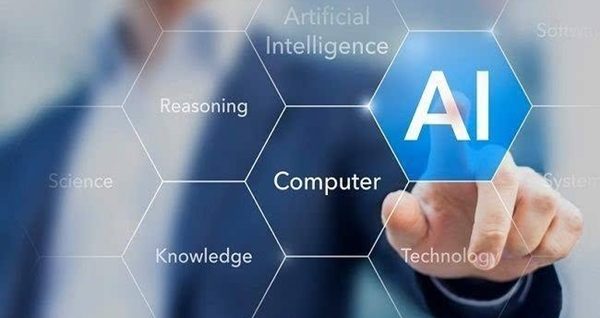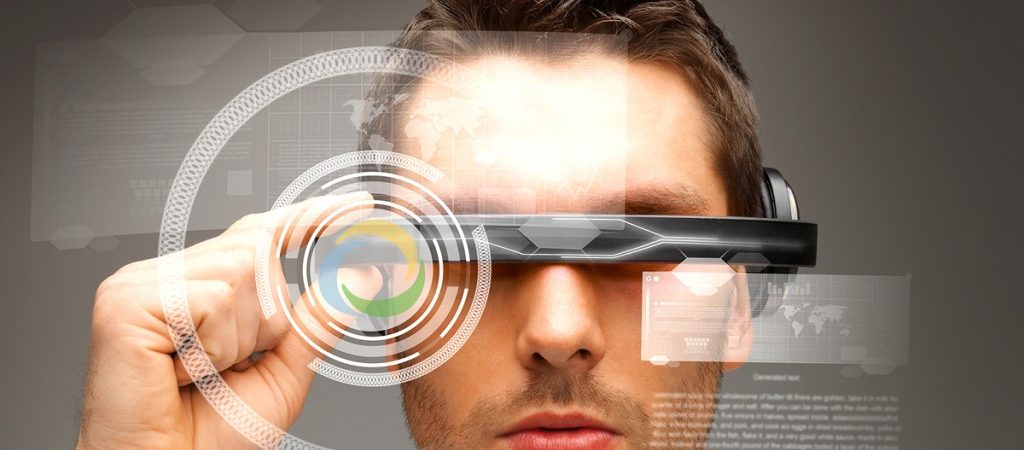Some of us still remember what it felt like to hold a mobile phone for the first time, better yet the sound of the connection to an Internet modem, the feelings of being amazed by something you never thought could happen on your living days…
At a much faster pace, we live today more and more experiences and experiments… some of them are things we have watched on a science-fiction movie a few decades ago… some others are not even concepts or processes we thought could ever exist.
The evolution of humanity needs has grown so different from basic or simple to complex and avid and technologies have been growing in harmony with those needs.
We can easily speak of dozens and dozens of new technologies in the past few years, but let’s focus today on the 7 most important and most spoken of emerging technologies trending in 2019 and 2020 and on how these technologies are impacting businesses.
Today, right now, we can almost connect everything to the internet. Internet was created to connect desktops and get work done on computers. All the benefits of the internet we know today were not possible before. The point is that connecting things to the internet yields many amazing benefits. We’ve all seen these benefits with our smartphones, laptops, and tablets, but this is true for everything else too.
The Internet of Things (IoT)

IoT is actually a pretty simple concept; it means taking all the things in the world and connecting them to the internet.
To help clarify, it’s important to understand the benefits of connecting things to the internet. Why would we even want to connect everything to the internet?
We can answer this question by simply categorizing things into 3 groups:
- Things that collect information and then send it.
- Things that receive information and then act on it.
- Things that do both.
In very simple words, we are talking here about being able to collect information of all kinds, this goes from weather information to population census or sales numbers. IoT works in real time, pushes this information to where it should be, creates this need to act on it if need be.
This dynamic is changing businesses and actors into active players. It changes the nature of the world into a dynamic circles that DOES NOT LEAVE THINGS UNFINISHED.
Information is served, action is taken, we progress and repeat. The successful business of today are those who are well-connected and are taking advantage of the data they collect and the way they are using it.
A much related emerging technology to IoT, is the artificial intelligence.
Artificial Intelligence.

The term artificial intelligence was coined in 1956, but AI has become more popular today thanks to increased data volumes, advanced algorithms, and improvements in computing power and storage. One of the ways we can define AI would be: “Artificial intelligence (AI) is wide-ranging branch of computer science concerned with building smart machines capable of performing tasks typically require human intelligence. AI is an interdisciplinary science with multiple approaches, but advancements in machine learning and deep learning are creating a paradigm shift in virtually every sector of the tech industry.”
AI has greatly impacted business. It enhanced the automation of factories in several sectors. Machine learning, deep learning as well as other AI technologies are being increasingly adopted and incorporated in industries and organizations to reduce the workload of humans which of course has reduced operational costs and the cost of manpower substantially, bringing about an AI automation to a level that has not been witnessed before.
It also eliminated the necessity for Humans to perform tedious tasks and allowing them to perform tasks in which they excel involving their creativity and interpersonal skills.
Let’s take the example of the banking sector that has and will be seeing a major breakthrough, thanks to the applications of AI. Financial institutions today are seen taking full advantage of this technology to make banking quicker and infinitely easier for the consumers. This has gone a long way in helping financial analysts get some reprieve from the tedious nature of their jobs and focus on deeper research and analysis of all-around consumer experience.
AI can most definitely be called the perfect marriage of creativity and technology. Artificial Intelligence is nothing but a robotic machine that has the ability to think intelligently and creatively as well as translate these thoughts autonomously in varied human applications. This fundamental basis of Artificial Intelligence is what has and can revolutionize the face of mankind. AI is not merely a unidimensional technology.
Its benefits and applications are far more important and noteworthy than its apprehensions, and this is precisely what will help humans in the future as well.
A very important branch of AI is today knows as Robotics.
Robotics

Robotics is the field of computer science and engineering concerned with creating robots, devices that can move and react to sensory input. Robots are now widely used in factories to perform high-precision jobs such as welding and riveting. They are also used in special situations that would be dangerous for humans — for example, in cleaning toxic wastes or defusing bombs. Robotics technology is influencing every aspect of work and home. Robotics has the potential to positively transform lives and work practices, raise efficiency and safety levels and provide enhanced levels of service. Even more, robotics is set to become the driving technology underpinning a whole new generation of autonomous devices and cognitive artefacts that, through their learning capabilities, interact seamlessly with the world around them, and hence, provide the missing link between the digital and physical world.
Blockchain
Blockchain revolution seems to be is in full swing as well. In simple terms, a blockchain can be described as an append-only transaction ledger. What that means is that the ledger can be written onto with new information, but the previous information, stored in blocks, cannot be edited, adjusted or changed. This is accomplished by using cryptography to link the contents of the newly added block with each block before it, such that any change to the contents of a previous block in the chain would invalidate the data in all blocks after it.
Blockchains are consensus-driven. A large number of computers are connected to the network, and to reduce the ability for an attacker to maliciously add transactions on the network, those adding to the blockchain must compete to solve a mathematical proof. The results are shared with all other computers on the network. The computers, or nodes, connected to this network must agree on the solution, hence the term “consensus.”
This also makes the work of appending data to the ledger decentralized. That is, no single entity can take control of the information on the blockchain. Therefore, we need not trust a single entity since we rely on agreement by many entities instead. The beauty of this construct is that the transactions recorded in the chain can be publicly published and verified, such that anyone can view the contents of the blockchain and verify that events that were recorded into it actually took place.
The most significant advantage of blockchain’s distributed ledger is reduced operational costs. “Cost can be taken out of existing processes by removing intermediaries or the administrative effort of record keeping and transaction reconciliation,” reported McKinsey & Co.
By eliminating the middleman, or data gatekeeper, blockchain allows companies to quickly and easily trace products and transactions all the way back to their roots. Walmart, for example, successfully decreased the time it takes to trace food from store shelves to the farm from seven days to 2.2 seconds using a blockchain, according to IBM’s Kelley. That time savings also results in considerable cost savings.
Additionally, this streamlined efficiency provides transparency, reliability and authenticity. And let’s not forget about security. Because data is shared on multiple systems in multiple countries — and validated before it’s recorded — it’s more secure. Each data block is encrypted and linked to the one before it.
With a more “fantastic” twist, we also talk today about Virtual Reality and Augmented Reality.

Virtual Reality (VR) is the use of computer technology to create a simulated environment. Unlike traditional user interfaces, VR places the user inside an experience. Instead of viewing a screen in front of them, users are immersed and able to interact with 3D worlds. By simulating as many senses as possible, such as vision, hearing, touch, even smell, the computer is transformed into a gatekeeper to this artificial world. The only limits to near-real VR experiences are the availability of content and cheap computing power.
Augmented reality (AR) is a type of interactive, reality-based display environment that takes the capabilities of computer generated display, sound, text and effects to enhance the user’s real-world experience. Augmented reality combines real and computer-based scenes and images to deliver a unified but enhanced view of the world.
Briefly, AR lets the user experience the real world, which has been digitally augmented or enhanced in some way. VR, on the other hand, removes the user from that real-world experience, replacing it with a completely simulated one.
Because VR requires complete immersion, VR devices shut out the physical world completely. The lenses on the smart glasses that deliver AR capabilities, on the other hand, are transparent.
VR and AR are revolutionizing the Training and Education sector, Medicine and surgery, the architecture, retails, Industrial field services, design and modelling and many other sectors.
Biometrics is another big name among trending emerging technologies. Indeed, faced with document fraud and identity theft, with new threats such as terrorism or cybercrime, and faced with the changes in international regulations, biometrics has been gradually implemented and is now established as the most pertinent means of identifying and authenticating individuals in a reliable and fast way, through the use of unique biological characteristics. Of course, increased public acceptance, massive gains in accuracy, a rich offer, and falling prices of sensors, IP cameras and software make it all the easier to install biometric solutions. Today, many applications make use of this technology.
Last but not least, Serverless computing which is a method of providing backend services on an as-used basis. A Serverless provider allows users to write and deploy code without the hassle of worrying about the underlying infrastructure. A company that gets backend services from a serverless vendor is charged based on their computation and do not have to reserve and pay for a fixed amount of bandwidth or number of servers, as the service is auto-scaling. Note that although called serverless, physical servers are still used but developers do not need to be aware of them.
Businesses which adopted serverless computing confirm having:
- Cut production to market distance
- Increased benefits (by minimizing fixed costs mainly)
- An easier pivoting
- Improved development management
Looking at the near future now, we see a wide range of technologies being launched and refined, some them emanating from the technologies that are today fully operational and some new promising ones.
It would take another twenty-pager to go over them in detail but here are briefly the emerging technologies that we should be watching out for in the coming five years.
3D printing is expected to do wonders. Trials on 3D printing are evolving by the day and once on point, we cannot even begin to imagine time, cost and LIFE savings that the world would witness. This is a technology that the whole universe is looking forward to.
5G technology is also another chapter that individuals and businesses are eager to try. 5G networks and devices are promised to be equally powerful and simple to implement. Finland is said to be one of the countries technically equipped to connect to 5G, waiting for industries to launch 5G devices on the market.
Researchers, engineers, scientists and all professionals in general are blessed to live in an era where fantasies do come true. Today, more than any time in the past, they have the means to dream and build on their dreams, to imagine and create.